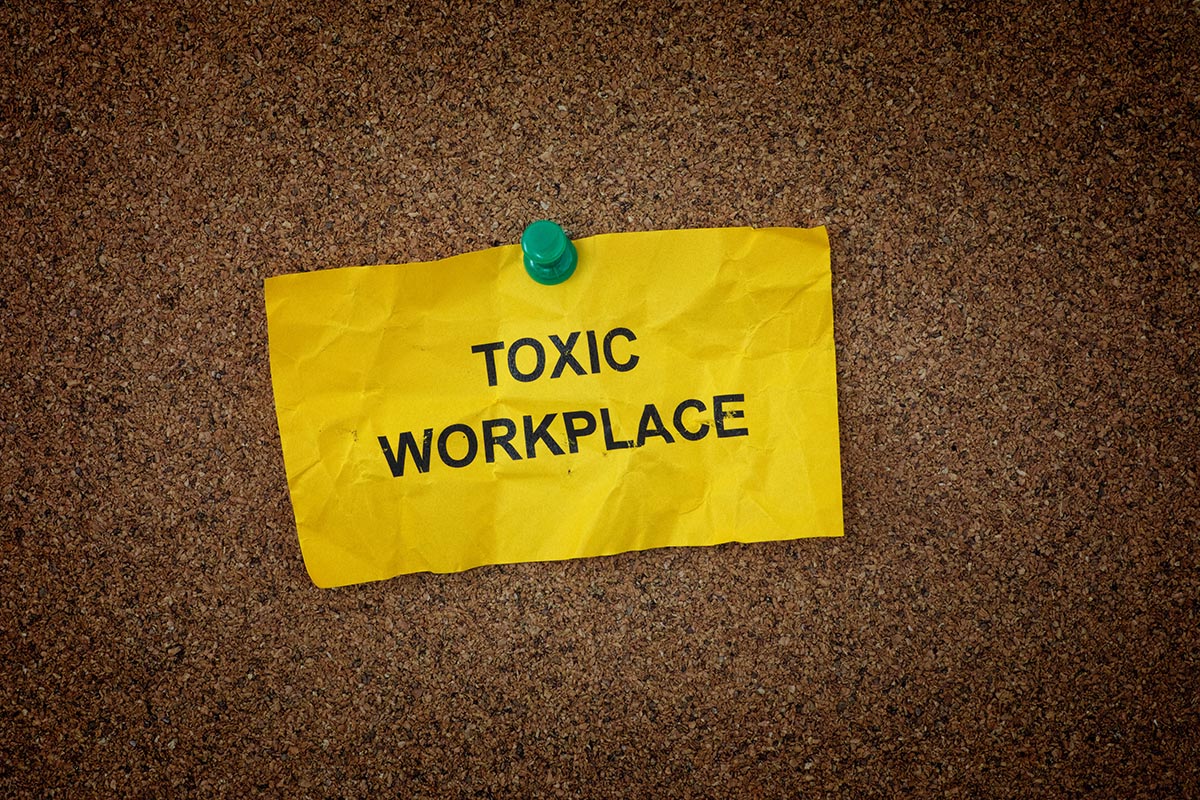
As I have ventured into conversations with a variety of people over the past weeks on the topic of toxic workplaces it quickly became apparent to me by the frequently puzzled faces that gazed back at me, most are not familiar with the word “toxic” in relation to the climate of a workplace. In fact, it became obvious that the image which comes to mind for many when they hear the phrase “toxic work place” is one of open vats of chemicals with poisonous vapours rising above them and employees laboring over or around them. Although that image is also very reflective of the atmosphere of a toxic workplace, linking that mental picture to the atmosphere that occurs in your place of work may not be a natural connection. Sadly, however, it has become a harsh reality for increasing numbers of people over the past few years.
Toxicity in the workplace is much more common than is realized, it can exist on an isolated basis between individuals, within a team in a department, vary from team to team in places where there are large numbers of employees within that kind of hierarchical structure, or it can be widespread throughout an organization. There are toxic leaders, toxic managers, and toxic organizations (the later so labeled due to a pervasive toxic culture).
Moving back to those initial conversations, once we started to talk about what kinds of behaviors are seen in these types of environments, invariably everyone I spoke to knew someone who had been impacted or touched by a toxic workplace: a friend, a colleague, a spouse, a partner, a sister, mother, brother or father.
The purpose of this blog is to provide you the reader with some concrete, helpful information through a simple question and answer format that will inform, and assist you in identifying a toxic workplace.
What types of behaviours create a toxic workplace?
The most common one seen is that of bullying between employees. We’ve all heard of the unfortunate stories of this happening in schools and seen and heard of the negative impact it has had on our children. Unfortunately it can and does also happen in the workplace: in the form of gossiping, the deliberate exclusion of people from their team, the office, and /or departmental network by peers or colleagues. It may include the use of various kinds of intimidation by those with higher levels of expertise, seniority, and/or include the use of aggressive behaviour verbally or physically.
What are the behaviors displayed by a toxic leader/manager?
A toxic leader is one who typically thrives on controlling their surroundings, inclusive of the people that work for and with them. They tend to micro-manage all aspects of work within their locus of control, display a lack of trust and confidence in the abilities of others, fail to recognize the work of their subordinates, take credit for the work of their subordinates, and use disrespectful communication styles. In some instances there can be an abuse of power as evidenced by the story shared with me by one individual whose supervisor ruled through fear, constantly set them up to fail by refusing to supply them with the resources they needed to do their work, attempting to discredit them at meetings by making snide comments covered up as jokes, the use of obviously disrespectful body language, making flippant comments about them to other leaders behind their back, and recruiting another person within their own department to replace them while they were still in their position. When confronted with their actions, these types of leaders tend to display emotionally insensitive attitudes accompanied by a lack of insight into their behaviour ranging from denial and/or attempts to cover them up.
What is a Toxic Organization?
This is an organization in which toxic leaders and toxic managers are commonplace, they exist from the CEO level down to the frontline supervisors. In this type of organization rather than being terminated from their position the leader’s behaviour is ignored and may even be rewarded. The work environment experienced by the employees is one of intense pressure, unrealistic demands, and ruthlessness.Consequences to the organization are significant as these high levels of employee stress lead to increased sick time, increased numbers of stress leave, and decreased employee engagement as people’s commitment to their work falters under the pressure. Ultimately there in an increase in employee turnover as the negative emotions displayed by the leaders infiltrate at all levels.
Peter J. Frost, a leading authority on toxic work emotions in the workplace said it so eloquently: “Emotions tend to be contagious, toxic ones leak out into the workplace affecting more than just the person afflicted. It can poison a team, a workplace, an organization.”
